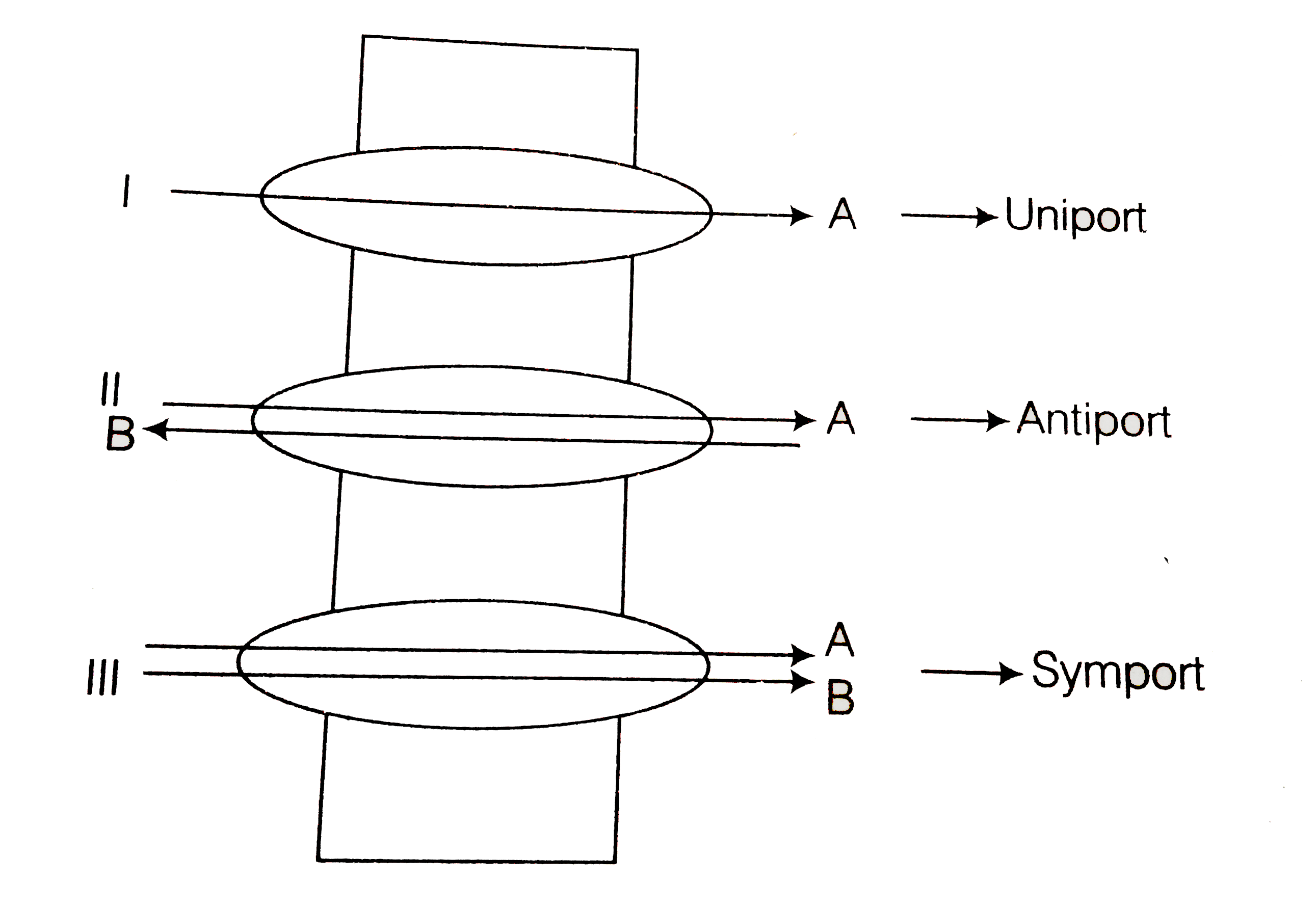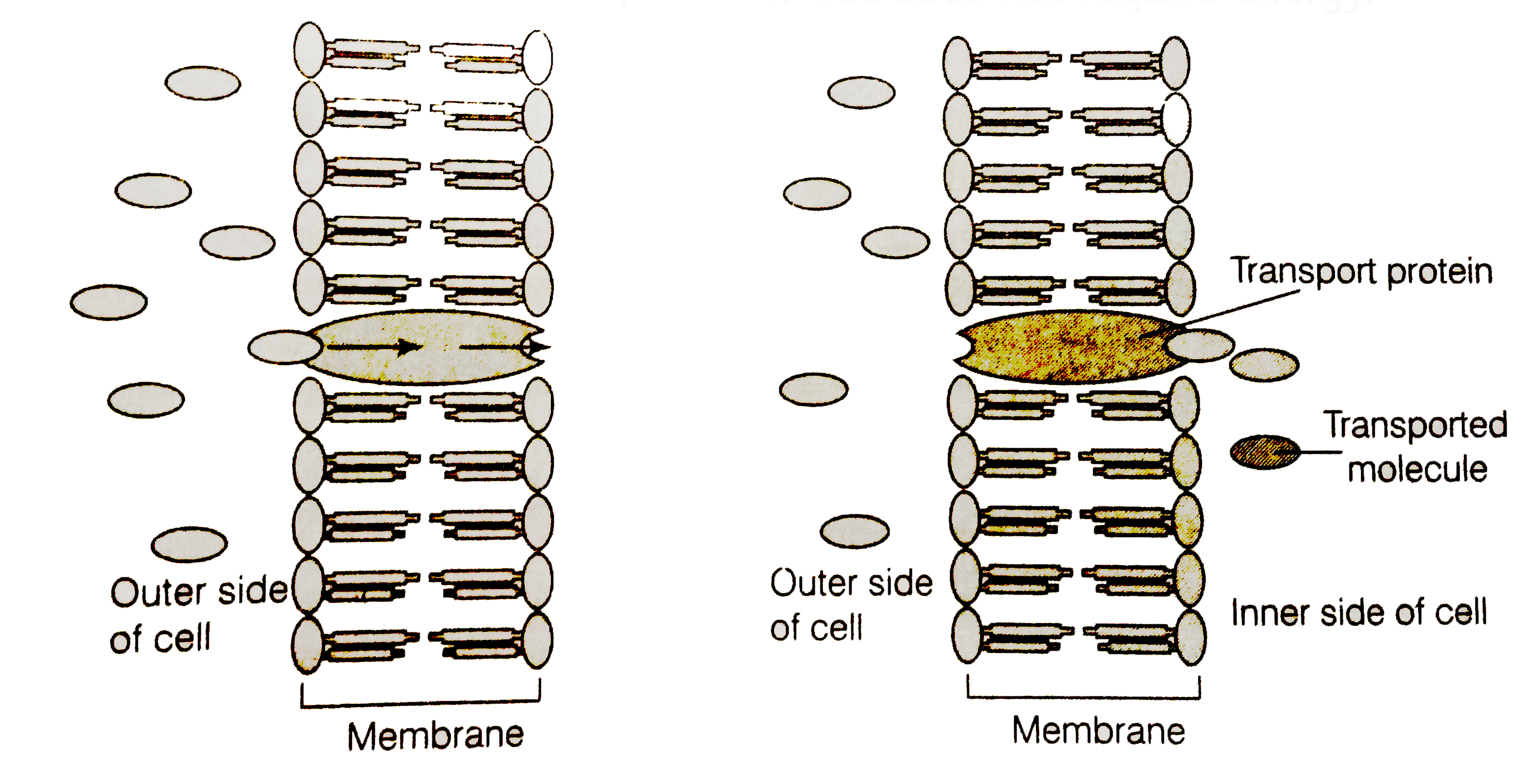Complete Solutions to Very Short Answer Type Questions of chapter TRANSPORT IN PLANTS of Class 11 book with complete answers and questions
| Class 11 | BIOLOGY |
| Chapter | TRANSPORT IN PLANTS |
| NCERT EXEMPLAR | Very Short Answer Type Questions |
| Number Of Questions | 23 |
| Academic Year | 2023-24 |
Smaller, lipid soluble diffuse fater through cell membrane, but the movement of hyfrophilic substances is facilitated by certain transporters which are chemically
View SolutionIn a passive transport across a membrane. When two protein molecules move in opposite direction and independent of each other, it is called as ...... .

View SolutionOsmosis is a special kind of diffusion, through which water diffuses across the cell membrane the rate and direction of osmosis depends upon
View SolutionA flowering plant is planted in an earthen pot and irrigated. Urea is added in high amouts to make the plant grow faster but after same time the plant died. This may be due to `"_______"`
View SolutionAbsorption of water from soil by seeds increases the `"_______"` thus helping seedings to come out of soil.
View SolutionWater moves up against gravity and even for a tree of `20m`height the tip receives water within two hours . The most important physiological phenomenon which is responsible for the upward movement of water is `"______"`
View SolutionThe plant cell cytoplasm is surrounded by both cell wall and cell membrane. The specificty of transport of transport of substances is mostly across the cell membrane, because
View SolutionThe `C_(4)` plants are twice as efficient as `C_(3)` plants in terms of fixing `CO_(2)` but lose only ...... as much water `C_(3)` plants for the same amount of `CO_(2)` fixed.
View SolutionMovement of substances in xylem is unidirection while in phloem it is bidirectional. Explain
View SolutionIndentify the process occurring in I, II, and III

View SolutionGiven below is a table. Fill in the gaps.

View SolutionDefine water potential and solute potential.
View SolutionWhy is solute potential always negative ? Explain `Psi_(w)=Psi_(s)+Psi_(p)`.
View SolutionAn onion peel was taken and
(a) placed in salt solution for five minutes.
(b) after that it was placed in distilled water.
when seen under the microscope what would be observed in (a) and (b) ?
View SolutionDifferentiate apoplast and symplast pathways of water movement. Which of these would need active transport ?
View SolutionHow does most of the water moves within the root ?
View SolutionGive the location of casparian strip and explain its role in the water movement.
View SolutionDifferentiate between guttation and transpiration.
View SolutionTranspiration is a necessary evil in plants. Explain
View SolutionDescribe briefly the three physical properties of water which helps in ascent of water in xylem.
View SolutionA gardener forgot to water a potted plant for a day during summer, what will happen to the plant ? Do you think it is reversible ? If yes, how ?
View SolutionIdentify a type of molecular movement which is highly selective and requires special membrane protenins, but does not require energy.

View SolutionCorrect the statements.
(a) Cells shrink in hypotonic solutions and swell in hypertonic solutions.
(b) Imbibition is a special type of diffusion when water is absorbed by living cells.
(c) Most of the water flow in the roots occurs via the symplast.
View Solution
Very Short Answer Type Questions questions and complete solutions for chapter TRANSPORT IN PLANTS of NCERT BIOLOGY (HINGLISH) of Class 11